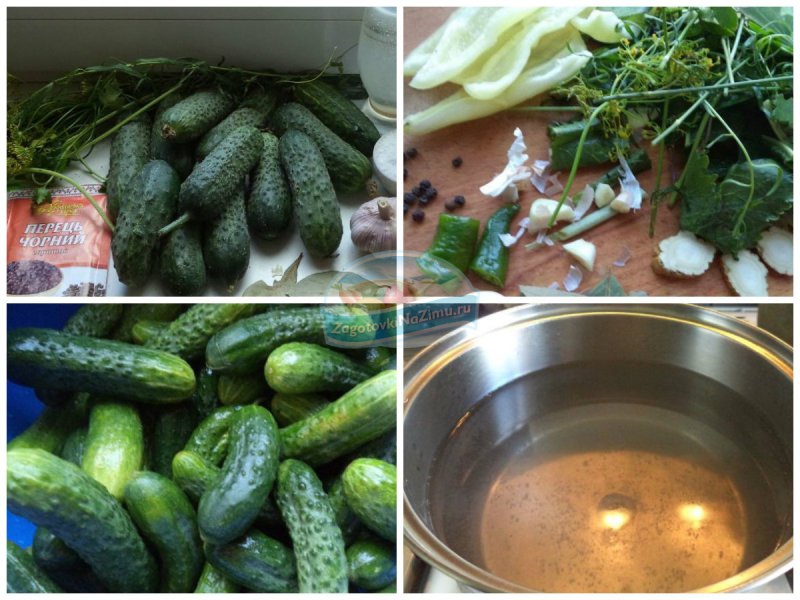Capers: what it is and what it eats with. How to grow capers
The useful properties of capers have long been known: the ancient Greeks exported them two thousand years ago. Nowadays, this product, rich in fiber, proteins, fats, vitamins, is actively used in cooking. They remind peas to someone, but in reality they are plant buds. Even a small amount of them makes food tastier.
What are capers
Caper is the flower bud of the caper plant, whose homeland is Asia and Africa. Now it is grown in France, Spain, Italy, Greece, Algeria. How do capers grow? The shrub is unpretentious, freely develops on bare stones and rocks. Unblown flower buds are picked by hand and used in cooking. Sizes can be any, it affects the degree of maturity. The larger the buds, the higher their value and usefulness, the tastier they are. They are almost never eaten fresh, but canned with salt and vinegar.
What do capers taste like
Now a can of pickled capers can be easily bought at the supermarket to diversify your favorite dishes and create new ones. What capers taste and how to relate to them? They are not only good in the photo, but also piquant, sharp, tart, they are distinguished by pleasant sourness and bitterness - because of the mustard oil in the composition. Use pickled or canned, apply, sometimes pre-soaked or doused with boiling water to remove excess salt and not cause harm to health.
Capers Recipes
Capers are widely spread in the culinary of different countries. Spicy spicy sauces are prepared from them, added to salads, soups, hot dishes, served as spices for meat. Often, salted buds or spicy marinade are added to familiar foods to give them a specific flavor. They even use oil - for dressing with hints of astringency, pungency and acidity. This product in the nearest stores is mainly sold not in natural juice, but pickled, with a lot of vinegar and salt. Good chefs achieve high quality dishes even with this ingredient.
Caper salad
How to cook a delicious salad with chicken? The recipe will win if you don’t cook the tender chicken breast, but grill it or bake it. The products will need to be divided into pieces, put in a salad bowl, greased with mayonnaise. Onion rings (you need to take sweet) will have to be distributed as thinly as possible, and only then smeared with mayonnaise. An important touch - on top of the salad should be sprinkled with pickled Mediterranean buds, garnish with fresh herbs. There is an option how to cook a salad with fresh vegetables (per 1 eater).
Ingredients:
- boiled chicken breast - 100 g;
- cucumbers - 50 g;
- tomatoes - 50 g;
- bulgarian pepper - 50 g;
- capers - 50 g;
- white wine - 1 glass.
Cooking method:
- Pour breast and sweet pepper with white wine for 10 hours.
- Cut chicken, cucumbers, tomatoes, peppers into small pieces.
- Cover the dish with a lettuce leaf, put layers on it: vegetable, then meat, at the end - capers.
- Pour marinade over chicken salad.

Caper sauce
A delicious sauce is very good for meat, fish and salads - complex and simple. It is prepared simply, it looks beautiful, it turns out appetizing, but you need to get used to its piquant taste. There are many options how to prepare such a dressing for every taste. Step-by-step recipes with a description of each stage and photo will not let you make a mistake. However, first you need to master the classic version.
Ingredients:
- garlic - 2 cloves;
- egg yolk - 1 pc.;
- olive oil - 150 ml;
- mustard (better Dijon) - 1 tsp;
- anchovies - 4 pcs.;
- worcestershire sauce - 1 tsp;
- lemon juice - 1 tbsp. l .;
- grated parmesan - 50 g;
- salt, black pepper.
Cooking method:
- Mix the yolk, mustard, beat. Salt, whisk more;
- Introduce a drop of olive oil, thoroughly mixing with a spoon, so that the consistency resembles mayonnaise;
- Crush anchovies, add lemon, Worcestershire sauce to them;
- Shuffle the components;
- Add chopped garlic and cheese to the mixture;
- Beat the sauce. You can pour Caesar salad on it.

It is worth preparing a separate gravy boat so that guests themselves add an unusual, new or unexpected ingredient to their plates. Caesar sauce with capers and anchovies is seasoned with salad of the same name. Few people know about capers - what it is and how the dish changes. A delicious sauce (additive) can be made according to such a recipe, which is given below.
Ingredients:
- raw yolk - 1;
- capers - 1 tbsp. l .;
- anchovies - 2-3 pieces;
- garlic - 1 clove;
- mustard - 2 tsp;
- vegetable and olive oil - half a cup each.
Cooking method:
- Mix the yolk thoroughly with chopped garlic, anchovies, capers, beat until completely uniform;
- Add mustard, mix thoroughly.
- Mix two types of oil, pour the mixture in a thin stream. Stir constantly.
- Insist 15 minutes.

Solyanka with capers
The meat hodgepodge is especially tasty - it is a thick, rich soup, appropriate in the cold winter months. The name "peasant" is also used - as a type of food for rural residents prepared from the remains of various products. Now the hodgepodge is served in the best restaurants, it is cooked in any home. A dish requires a solid set of quality products, several varieties of meat, deli meats, sausages. There are many recipes with photos of this soup, one of them is a combined hodgepodge with capers.
Ingredients
- beef on the bone - 600 g,
- smoked sausage - 50 g,
- boiled pork, smoked ham, boiled sausage - 200 g each,
- pickles - 300 g;
- capers - 30 g
- lemon - 1 pc.;
- celery, carrots - 1 pc.;
- pitted olives - 50 g;
- onions - 2 pcs.;
- tomato puree - 200 g;
- vegetable oil - 20 g;
- sour cream - 50 g;
- pepper, bay leaf, salt;
- parsley.
Cooking method:
- Cook the beef broth, at the end add carrots, celery, onion. Remove vegetables with meat when tender.
- Fry chopped onions, add chopped or grated cucumbers to it, simmer for 10 minutes.
- Combine dressing with tomato, boil, pour into the broth.
- Boiled beef, boiled pork, sausage, ham cut into pieces, put in soup.
- Lower capers, olives, lavrushka, salt, boil, leave for half an hour.
- Garnish the soup with lemon slices, herbs, sour cream.

Pasta with capers
Italian cuisine has opened pasta for us. There are many recipes for its preparation, since variations with sauces, dressings, additives make each dish unique. Combining all kinds of ingredients, you can achieve unusual taste sensations. Pasta with capers and tomatoes, flavored with a spicy aromatic sauce, is worth it to master at least one of the recipes - with baked tomatoes, garlic and olives.
Ingredients:
- tomatoes - 750 g;
- garlic - 2 cloves;
- capers - 3 tbsp. l .;
- olive oil - 2 tbsp. l .;
- salt, pepper - to taste;
- seedless olives - a third of a cup;
- pasta (pasta) - 350 g.
Cooking method:
- Stir the tomatoes, garlic, capers, salt, pepper, oil, bake on a baking sheet for 20 minutes at 220 degrees.
- Add the olives, cut in half, hold for another minutes at a lower temperature.
- Cook pasta, fold in a colander.
- Mix everything with sauce and spices, pour oil.

How to replace capers
From capers, food acquires a pleasant sourness and piquancy, but if the hostess failed to buy exotic buds, do not give up the dish. If you want to surprise gourmets, you can prepare in advance by pickling the unripe fruits of nasturtium or dandelion buds - they are similar in taste. Sometimes you need a simple option, than you can replace capers in sauces, fish, meat dishes, hodgepodge. Fit:
- olives with lemon juice;
- olives;
- pickled gherkins;
- in some cases even sour-sharp small cucumbers and green tomatoes are suitable.
Video: pasta with capers for sandwiches
Capers are unblown buds of a prickly shrubbery caper plant.
The shrub itself is insanely beautiful - despite the fact that they live in rather harsh conditions, the flowering of the bushes is magnificent! From above they are covered with flowers, and they bloom all summer!
Caper refers to perennial shrubs, grows in the Caucasus and Crimea, wild species can be seen in Dagestan.

The kidneys have a tart taste with a rich aroma.
Caper is a thermophilic plant that belongs to the caper family.
More than three hundred species of plants exist at the moment: creepers, perennial grasses, shrubs, shrubs. Mostly grow in the wild in Central Asia, the Mediterranean, Crimea, India, in the Caucasus.

It is grown mainly in Italy, Spain, France.
The caper is used to create landscape designs, and also used as food. Caper buds are rich in vitamin C, vitamin P (routine).
In foreign folk medicine, capers are used as a means of lowering blood pressure, healing wounds, calming nerves.
Before eating, capers are salted with olive oil or marinated in wine vinegar.
They are used pickled or canned.

The capers prepared in this way have a dark green color and a tart, moderately sharp or bitter sour-salty taste.
The buds are harvested from the end of spring to September, several times during the summer by hand. After collecting the buds for 2 weeks, the plant is covered with new buds.

In one season, from one bush you can get up to 3.5 kg of buds.

How to grow a caper
Capers are unpretentious plants, but they are little grown at home. This is due to the fact that the bush reaches large sizes, for example, the root of an adult plant can reach fifteen meters.
At the same time, it grows slowly and can grow for a long time in a pot of small diameter. After you need to plant such a plant in the ground, and leave layering in its place.

They are used in cooking, medicine and as folk remedies for the treatment of diseases.
Capers can be grown in arid areas, they are photophilous. If you plant capers in one place without replanting, they will bear fruit for up to 15 years in a row.

Propagate the plant by layering, parts of the bush or seeds.
Sowing seeds should be done in a greenhouse or directly in the open ground.
Sowing is carried out in the spring, from March to May. The distance between plants should be at least 40-50 cm, and the row spacing of 70 cm.
A fast method of reproduction is considered the method using layering.
It requires open sunny areas and the absolute absence of groundwater.

Fertile soil is not so important for it, it can grow on heavy lands, in crevices of walls. The shrub has a strong rhizome, and can withstand even severe frosts. The plant is easily grown in one place for about 15 years, without requiring constant transplants.
Sowing seeds can begin in March or early April. For excellent growth, plant it in a greenhouse or on sandy soil, to a depth of about 30 cm. Aisles should be about half a meter - a meter, and the distance between plants should reach the same size.

No great seedling care required - only weeding and watering is enough.
The most important and, in principle, what will ensure the yield is to obtain seedlings. The main problem of capers is that they do not rise well and take root for a long time. Only after a couple of years you, at the place of planted plants, can you see attractive flowering shrubs!
The caper has beneficial properties. If you will boil the roots of a plant, then this decoction can be used for allergies, rheumatism, paralysis, torn branches - excellent antiseptics and agents that disperse bile.
Juice of flowers and flower buds themselves stimulate appetite. Small capers are also useful in that they are anti-inflammatory.

Surely most of us have heard about such a product as capers, but only a few managed to discover its valuable taste characteristics. This product appeared in domestic cooking not so long ago, but the Mediterranean cuisine has been actively using it as a spicy addition to all kinds of dishes for more than a century. Therefore, today we will try to acquaint our readers with this Mediterranean guest as closely as possible, and also determine what capers are combined with in modern cooking and what benefits they can bring to the human body.
Description
A term such as “capers” combines several meanings at once. Often, it is understood as a rather peculiar food product that is widely used in European and Mediterranean cuisines, but few know how it grows, where it comes from and what unique taste characteristics it has. Next, we will delve into this in more detail.

How to grow
According to the generally accepted interpretation, the term "capers" understand the genus of perennials of the same family, which are often creeping prickly shrubs, from 1 to 2 m high. According to the latest scientific data, the Kapersov family includes 181 species, among which there are representatives of shrub flora and vines, as well as perennial grasses.
Did you know?Capers have been used extensively by humans for more than 2 thousand years. According to archaeological finds, this product was actively traded by the ancient Greeks.
Regions with a subtropical and tropical climate are the natural habitat for this species, and the homeland is the warm and humid regions of Southern Europe and North Africa.

All plants have a characteristic appearance. A typical Kapersov representative has simple leaves with glandular pubescence and spiky stipules. In some varieties, pubescence may be absent, and the leaf blade is complicated to a triple structure. The flowers of the plant are regular, they consist of 4 full-fledged petals and have 4 or 6 stamens. After flowering on a shrub, the fruit box, consisting of a huge number of small seeds, ripens.
What is spice?
In cooking, capers are understood to mean pickled non-blooming buds of a caper. This spice, quite interesting and underestimated by domestic chefs, can completely change the taste of a dish, give it a more spectacular shade and pleasant sharpness. In addition, most of the dishes of modern European cuisine can not be imagined without this product, so its popularity is only growing every year.

How to get
Often, to obtain an exquisite spice from caper buds, many technological processes are required, since derivatives of this species are suitable for use exclusively in canned or pickled form. After the appearance of the first buds, a long period of their collection begins. Suitable for use are young, non-blooming appendages of the plant. Traditionally, the smallest buds are the most tender.
Did you know?According to historical data, capers were part of the original Olivier salad recipe, which Lucien Olivier himself invented in the late 19th century. However, for Soviet citizens, this unprecedented product from the recipe was replaced by a more affordable and cheaper - canned cucumber.
With their growth, many substances and compounds accumulate in the tissues, therefore, for a more piquant and spicy flavor, they are collected immediately a few days before blooming.

After collecting the buds, they are sorted by size, and then preparation. Appliances of uniform size marinate or preserve. To do this, they are soaked in saline with the addition of vinegar and vegetable oil. In this form, the product should be infused at a temperature of +5 ... + 10 ° C for several days. Before use in food, pickled capers are pre-soaked in cold water or scalded with boiling water. This makes it possible to eliminate excess salt and the concentration of related substances. Properly prepared capers have a bright, piquant, sour, slightly islandy, tart flavor with a characteristic mustard note.
Chemical composition
Even in processed and canned form, this product contains many useful substances. First of all, it is kapparidin, alkaloids, flavonols.

In addition, these include sugars, thioglycosides, steroidal saponins, and mirosine. Do not forget about the huge number of various vitamins, minerals and trace elements.
Rich in capers and all kinds of healthy fats. The product contains saturated fatty acids (myristic, palmitic, stearic), monounsaturated fatty acids (palmitoleic, oleic, gadoleic), polyunsaturated fatty acids (linoleic, linolenic, eicosapentaenoic).

The energy value of canned capers is about 25 kcal. 100 g of the product contains 2.36 g of protein, 0.86 g of fat, 1.69 g of carbohydrates, 3.2 g of dietary fiber, 8.04 g of ash and 83.85 g of water.
Did you know?In the Caucasus, there is its own analogue of capers. This is the so-called dzhongioli (Colchis sclech) - a rare endangered shrub whose buds are also pickled for use in culinary purposes.
What are the health benefits
For many it will come as a surprise, but such a food product as capers has a real healing effect for the human body. Therefore, it has been actively used for many thousands of years in home medicine. First of all, eating this product helps to improve the general condition of the skin. The composition of the capers contains a specific substance - quercetin - which directly improves the condition of the skin.
In this case, the routine that this product is rich in helps to lower blood pressure. A high content of vitamin K helps to normalize blood coagulation and reduce the concentration of prothrombin, and a high copper content helps to regulate oxygen metabolism in tissues and makes it possible to stimulate the absorption of protein and carbohydrates.

Other derivatives of the caper bush are also useful for general human health. Healing decoctions are prepared from young branches and leaves of the plant, which help to cope with manifestations. In case of problems with cardiac activity, decoctions from the bark and flowers of the bush help to cope with acute problems of diseases, as well as improve the overall emotional state in case of neurosis. Essential oil from caper seeds nourishes and moisturizes the skin, so it is actively used in many varieties of massage procedures.
Cooking Application
The number of ways to use capers in cooking is quite large. This product is used as part of a side dish, a savory snack or as one of the ingredients of a multicomponent dish. One of the main features of this product is to enhance the taste of the main ingredient, so this ability is often used in the preparation of fish and meat dishes, which not only become more saturated, but also acquire a distinct piquancy and spicy aroma. In addition, the ability described above has become the main reason for the emergence of a huge number of various sauces, marinades and dressings based on the product.

Capers are most successfully combined with lamb, beef, poultry, anchovies and all kinds of smoked and salted fish, as well as seafood and cheeses.
As mentioned above, pickled capers are a fairly saturated product, so they are used in their pure form quite rarely. According to most recommendations, they are ground with herbs, spices, seasonings or chopped to the maximum. This makes it possible to evenly distribute the aroma of capers over the dish and saturate all the ingredients to the maximum. In addition, due to the high salt content in pickled capers, this product is often used instead of salt for all kinds of soups, and.
Important! Capers should be added to the dish at the final stages of preparation, only in this case the characteristic aroma and spicy taste of the product will remain for a long time.
Medical use
The positive effect of capers on the human body was noticed in antiquity, so this product has been used in folk medicine for quite a long time to treat many common disorders. In most cases, diets with a high content of this product are used for general strengthening purposes.

For problems with the systematic use of capers, it contributes to an active fight against loss of bone density and the initial stages of osteoporosis.
Important!It is not recommended to use capers on your own; before therapy, you should always consult with doctors.
With this product in the daily diet makes it possible to reduce the pathological concentration of sugars in the blood, as well as protect the vascular system from atherosclerosis and varicose veins. Alcoholic extracts from capers treat problems with the thyroid gland. To prepare them, 20 g of capers are insisted in 250 ml of vodka for 7 days. The resulting product is used in 10 drops 3 times a day.
But the most valuable, from the medical side, are the leaves, bark and shoots of the bush. Decoctions from the rhizomes of the plant are struggling with a decrease in the protective functions of the body, a decoction from the leaves - with diathesis. For this, 10 g of dry raw material is poured into 250 ml of water, boiled for 7-10 minutes and insisted for 2-3 hours. The resulting liquid is taken 1-2 tbsp. l 3 times a day 15 minutes before meals.

The fruits of the plant eliminate the pathology of the gums, for this 2-3 times a day you should carefully chew a small amount of these fruits, a noticeable therapeutic effect can be obtained after a week of the procedure.
Contraindications
Most foods, even when completely safe for the body have a number of contraindications for use, and capers are no exception.Due to the fact that the composition of this product contains many highly active substances, its excessive consumption is fraught with a general health condition.

In most cases, this is due to the increased content of compounds in the composition of the product. Therefore, in the presence of chronic or acute manifestations of constipation, sexual excitability, or at low pressure (hypotension), the use of capers should be limited, or this product should be completely abandoned.
Important! An absolute contraindication to the use of capers is pregnancy. Women in the position are strictly forbidden to eat them. Otherwise, the increased sodium content in the product may adversely affect the general course of pregnancy.
Capers - This is a rather unusual guest from such a distant Mediterranean cuisine for us, however, when you see him on a shelf in a supermarket, you should not avoid purchasing it. The spicy, aromatic and slightly islandy flavor of this product can radically change the taste, give the dishes a unique zest, and also provide the body with a large number of all kinds of vitamins, minerals and healthy fats.

However, the use of this product should be approached with caution, since a high content of active substances in it can adversely affect the general condition of the body.
A gift of the southern sun from a thorny shrub with long stems, which in Latin is called Capparis spinosa. The plant blooms beautifully, but it is the collection of capers that deprives it of this flowering. The unbroken buds of the bush is our piquant product. All capers are painted like dark olives, and the smallest buds are comparable to the size of corn grains.
For eating, the buds are first pickled in a vinegar-salt mixture to be added to various dishes in a processed form.
Pickled buds - it sounds strange only by ear. Ready-made capers look pretty. What is this clearly visible in the photo below:

The taste of capers covers several shades at once - astringency with sourness, reminiscent of mustard. And this is not surprising, because the buds have a high content of mustard oil.
Composition and benefits of capers
The energy value of capers is formed by carbohydrates (up to 5%), there is a little protein (up to 2%) and very little fat (no more than 1%). As a result, they have few calories - only 16-22 kcal per 100 grams of product - and a very unusual nutrient content.
The following substances are present in 100 grams of salted buds:
- Two daily (!) Sodium norms;
- ¼ of the daily intake of vitamin K;
- Up to 12% of the daily norm of riboflavin (vitamin B2);
- About 170 mg of quercetin (a powerful flavonoid with antioxidant properties).
What does the composition of capers tell us about the benefits and harms to the body?
Quercetin is the basis of laudations about the effects of exotic buds on youthful skin, women's health, and cancer protection. A multifunctional substance is almost the most studied antioxidant from an extensive group of plant flavonoids, numbering more than 6 thousand compounds. Small capers contain quercetin ten times (!) More than apples, pears and raspberries - well-known suppliers of valuable flavonoid.
However, sufficiently large clinical studies on quercetin have not been conducted. It is not calculated in the mandatory daily norm and has not yet become a donor of breakthrough ideas for the pharmaceutical industry. The most reverent attitude towards him is with nutraceuticals. Quercetin is a constant participant in many dietary supplements designed to slow down aging and reduce the risk of cancer.
What do we get from capers besides healthy quercetin? Unfortunately, there is too much salt, which is contraindicated in many private diseases - hypertension, vascular atherosclerosis and kidney problems.
There are two ways to reduce the harm caused by excess sodium in capers:
- Buy only pickled capers (not salted ones), where there is less sodium;
- Soak the buds at least 30 minutes before preparing meals with them.
Choosing the right grades
 Hoping for a maximum size is a common consumer mistake when purchasing an unknown product. Larger does not always mean better. This also applies to capers. The most expensive varieties are small buds.
Hoping for a maximum size is a common consumer mistake when purchasing an unknown product. Larger does not always mean better. This also applies to capers. The most expensive varieties are small buds.
Since the unknown is present only with us, and in Europe and America they have long chosen a distinctive product, manufacturers have developed a clear grid of sizes and grades.
We list the varieties in descending order of price and value:
- The highest grade - non-pareil - up to 7 millimeters in size;
- Surfines - size 7-8 millimeters;
- Capucines - 8-9 mm;
- Capotes - 9–11 millimeters;
- Fines - 11-13 mm;
- Grusas - 14 and more millimeters - the least valuable variety.
What countries do capers love?
 Of course, in the Mediterranean countries. In the famous diet of the same name, the buds have a special corner, so it is very easy to meet dishes with them in Greece, and in Italy, and in Cyprus.
Of course, in the Mediterranean countries. In the famous diet of the same name, the buds have a special corner, so it is very easy to meet dishes with them in Greece, and in Italy, and in Cyprus.
Pickled capers are great friends with pasta in various sauces (for example, Tartar and Tomato), perfectly fit in meat and fish dishes, especially with chicken, tuna and smoked salmon. They easily become the key emphasis of taste in vegetable salads, and the leaves of the bush are abundantly used in cut form, just like we do with curly leaf lettuce.
Capers Recipes
So, we found out what capers are, but we don’t know what they eat in detailed recipes. Enthusiastic culinary experts love to exclaim “Recipes are a great many!” We would not say that the number will reach the “great”, but attractive combinations, indeed, are not few.
Below we have described the simplest and most universally delicious options that use pickled capers.
Tuna cheese salad
- We need: 300 grams of tuna (canned in its own juice), 120 grams of hard cheese (Dutch, Russian), a small onion, 15-20 pickled capers, mayonnaise.
- What we do: we cut the ingredients into a small cube, sprinkle them with buds, season with mayonnaise or a mixture of mayonnaise and ketchup in equal proportions.
- The salad is happy to accept new ideas: some canned corn, any chopped greens, or half a green apple cut into cubes.
Red pepper sauce for pasta
 We need: 1 large and fleshy sweet red pepper, 150-200 grams of canned tuna, 2 large cloves of garlic, 1 tablespoon of capers with a slide.
We need: 1 large and fleshy sweet red pepper, 150-200 grams of canned tuna, 2 large cloves of garlic, 1 tablespoon of capers with a slide.
What we do: in a hot frying pan in olive oil, fry the pepper, cut into short strips, until elastic softness. Near the end of the roast, add chopped garlic. Remove from heat, combine with chopped tuna and add piquant buds.
You can enrich the taste with basil leaves or a set of Italian herbs.
Lemon sauce for fish dishes
 We need: 1 lemon, 100 ml of olive oil, 2 tbsp of French mustard, 2 tsp of sugar, an average bunch of dill, 3 tbsp of small capers.
We need: 1 lemon, 100 ml of olive oil, 2 tbsp of French mustard, 2 tsp of sugar, an average bunch of dill, 3 tbsp of small capers.
What we do: wash the lemon well and on a fine grater remove the yellow part of the zest from half the fruit. Squeeze the juice of the whole lemon in a bowl. Combine the zest, juice, oil and mustard, add chopped dill and beat the mixture in a blender - with moderate fanaticism.
Our goal is homogeneity, but not completely broken dill and certainly whole capers. You can finely chop a part of the beam and add it after whipping. At the end, add capers, mix the sauce with a fork and serve.
Dill can be replaced with any greens suitable for fish (parsley, basil, celery, thyme), as well as fried onions. In any case, we maintain the same principle: we crush part of the ingredient, part - finely chop and add.
Shrimps in caper tomato sauce
- Our ingredients: shrimp (800 grams), medium onion, 4-5 medium tomatoes, tomato paste (1 tablespoon), flour (2-3 tablespoons), chopped parsley (2 tablespoons), capers (2 -3 tbsp.spoons), vegetable oil for frying, salt, pepper to taste.
- How to cook: cut tomatoes into pieces about 2 cm and pour them out into a pan with oil. We send tomato paste here and simmer for 7-10 minutes over moderate heat, stirring constantly. Shrimp breaded in flour and fry for about 5 minutes. Pour them with sauce, sprinkle with parsley and pickled buds.
- By the way, shrimp will easily give way to strips or pieces of boiled squid. The main thing is to put the squid in the sauce at least 1 hour before serving, so that they have time to soak, waiting for a meal in the refrigerator.
Pay attention to a hearty men's dish - a prefabricated meat hodgepodge, where capers deliciously made friends with chicken, beef, smoked meats and pickles. Let's pay tribute to the cook: he perfectly explains the many important nuances of the hodgepodge. Under such guidance, even a novice cooking fan will cope with it!
We hope our detailed story about the practical side of a little-known product was useful to you. Now you know the answers to questions about capers - and what it is and what it is eaten with. And, therefore, you can gracefully sparkle with erudition in a friendly conversation, at the same time feeding guests and home with something new!
Thank you for the article (1)
Modern cooking gives a person wide opportunities for the diversity of his diet. You do not need to have ordinary abilities to bungle a restaurant dish at home. The action plan is: to find an interesting recipe, write down all the necessary ingredients, go to the supermarket, return home and start creating culinary art. Indeed, now on the shelves of the grocery store you will find everything, even from the most intricate list of ingredients of a gourmet restaurant dish. But sometimes a Russian person is overcome by distrust of overseas cuisine. For example, if the “home chef of the kitchen” sees an unusual word in the recipe that is not familiar, then most likely the future “cook at home” will start looking for a new recipe than to get to know the unknown ingredient better. Often this happens with capers. But, in fact, this harmless ingredient is not harmful, and even more dangerous. It is just necessary to get to know these “mysterious” capers: what is it, and, in the language of the people, what it is eaten with.
What are capers and how do they look?
So, we answer the main question: capers - so called unblown buds and fruits of the same plant. This shrub comes from North Africa and Southern Europe, but is also found in our area: in the Crimea or the Caucasus. This plant is completely without special needs, because it grows even on a rocky surface.
They look like small elongated cabbage.
To some, capers are more like peas. Others will see an unopened bud. Everyone sees in his own way.
Capers can be either small or large. Cost, as usual, also depends on their size: the larger, the higher the price.
Fresh capers have a peculiar taste, they are almost impossible to eat. That is why pickled or salted buds, tart and savory in taste, are more common with sourness and bitterness. So capers are just made for connoisseurs of spices and pungency.

What is prepared from capers?
Due to its unusual taste, which we described a little higher, capers took an important place in the recipes of all cuisines of the world. It should be noted that their effect on the human body when eating is comparable to the effect that sodium glutamate produces: the main products in the dish become more delicious.
TO what products are suitable capers?
- Meat dishes (preferably lamb and beef) and poultry;
- Fish meals;
- Cheeses such as "mozzarella" and "feta";
- As a side dish, you should give preference to pasta and rice.
Salted buds are great for salads (by the way, in the traditional “New Year's” Olivier, capers should be exactly the same as capers) and for dishes that require spiciness.
Due to the unusual taste, kitchen experts advise add capers at the very end of cooking, almost before serving.

How can capers be replaced?
Currently, you can find these salty unusual buds in almost any supermarket. But they most often “fall out” of the shopping list, because they are not the primary product. But if you still find a recipe that includes capers, but you don’t have them at hand, don’t be upset, you may find an alternative to them right at home. Let's consider some replacement options:
- In a salad, they can be replaced with pickled gherkins, or, in extreme cases, pickles;
- Olives or olives are added to fish and meat dishes instead of capers;
- When preparing sauces, it is recommended to replace with finely chopped olives mixed with lemon juice.
There are other ways to make up lack of capers, but do not forget that they give the dish a delicious, and at the same time difficult to taste.

Caper Recipes
Since in essence capers are more reminiscent of additive or seasoning, then first of all you need to arm yourself with fantasy. But before that you need to try to cook at least the simplest dish with their participation. Here are some examples.
- Salad with tuna: Cut one onion into half rings, add chopped pieces of tuna, a little grated cheese and torn leaves of arugula. Pour salad dressing with olive oil and balsamic vinegar. Add capers at the end.
- Pasta sauce: fry the bell pepper in strips, add the finely chopped garlic. After frying, add basil leaves and capers to the mixture.
- Zucchini and capers appetizer: Cut the zucchini into thin slices and fry in sunflower oil and salt. Combine capers, anchovies, balsamic vinegar and olive oil in a blender. The mass must be uniform. If desired, you can also add parsley and basil in the sauce. Put the fried zucchini slices and top them with the resulting blender sauce.
Again it is worth recalling: capers are not the main ingredient, but play a huge role in shaping the taste of the dish.

Capers: price per jar
Despite its outlandish name, the price for a jar of delicacy is close to affordable. No wonder that the cost of the product depends on the manufacturer., quality, weight and place of sale.
- So, the company " IBERIKA"Offers to buy a jar of capers weighing 240 g on average for 130 - 170 rubles, and 100 g - from 60 to 100 rubles.
- Pickled buds from the company " AKORSA"will cost an average of 120 - 150 rubles per jar weighing 240 grams.
- Manufacturer Fragata offers customers 235 grams of capers in glass from 100 rubles.
- There are also elite options: for example, " Harom"Proposes to give about 750 rubles for 100 grams of salty fruits, and for buds marinated in olive oil - 950 rubles.
It can be concluded that this is a standard pricing situation. If you want to try capers, or you need them as an ingredient, it is better to go around several stores in search of the best deal.
Capers and medicine
Being a plant caper It benefits not only for cooking. There are many examples of its use as a therapeutic agent:
- Use to protect the cardiovascular system;
- Affect the strengthening of immunity;
- Help blood clot better;
- Removes toxins toxins from the body;
- All parts of the caper can be used as an anesthetic and antiseptic.
What parts of capers should be used in medicinal purposes?
- If a person headache need this plant.
- To return healthy appetite and sound sleep you need to eat a couple of buds before eating.
- In the fight against fungal and skin diseases you need to grind the shoots with garlic.
As it became clear, an outlandish plant is useful not only in the kitchen, but also in treatment, for health.

In this article, we talked about capers, what it is like to cook them. Now you can easily say that these plants, or rather their salted buds, will make home cooking more refined and unique. And having learned the average price for this unusual product, one involuntarily wants to get a jar in the refrigerator, just in case.
Video: how capers are made
In this video, Daria Malakhova will tell you what capers are and how to cook them. He will show the recipe for Capers with Forcemeat:
